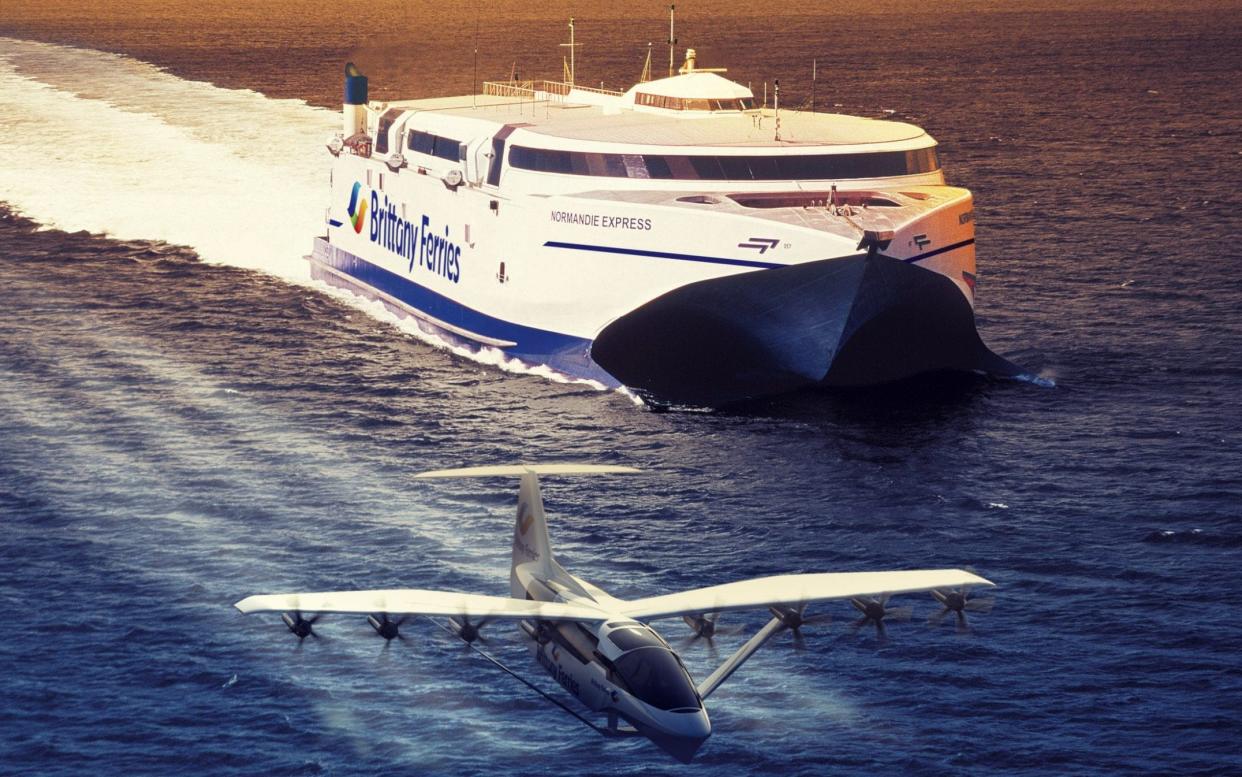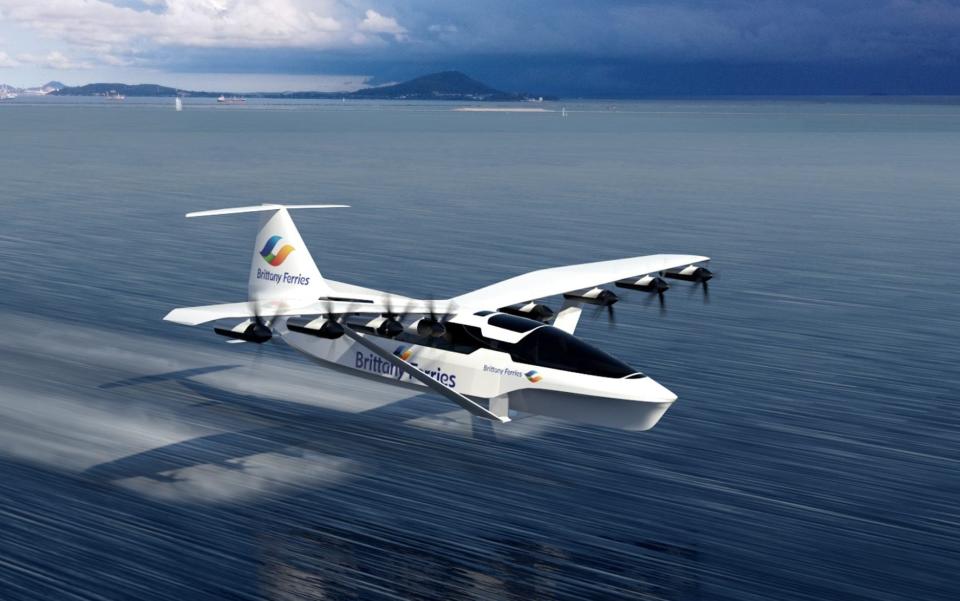'Flying' ferries could be crossing the Channel by 2028

The ferries of the future will be able to 'fly' across the sea like hovercrafts and could be crossing the Channel in seven years.
Brittany Ferries, which sails cruises between Portsmouth, Plymouth, France and Spain, has announced it is starting work on a new electric-powered ‘Seaglider’.
The futuristic vessel will be based on hydrofoil technology, which lifts surfboards and smaller boats out of the water using air pressure and underwater wings.
The project aims to be able to apply the technology, which was first successfully developed by the inventor of the telephone, Alexander Bell, to a ferry that can carry between 50 and 150 passengers across the channel by 2028.
The new craft is expected to be able to travel at speeds of up to 180mph making it more than six times faster than conventional ferries.
This could cut the crossing time for passengers from Cherbourg in France from three hours to just 40 minutes.
Brittany Ferries is working with a US start-up called Regional Electric Ground Effect Nautical Transport (Regent) to develop a system that will allow large ships to hover above the waves even at lower speeds.
When departing from port, the craft will rise onto its foils using wing-mounted propellers and float over the waves on cushion of air pressure, in a manner akin to a hovercraft.

The current plans will see the ferries charge their electric batteries in port between journeys, which will be able to do 180 miles before running out.
Later generations of batteries in development are expected to allow the vessels to do up to 500 miles on a single charge.
Frédéric Pouget, ports and operations director for Brittany Ferries, said: “Seaglider is an attractive and exciting concept and we look forward to working with Regent in the months and years to come.
“We are particularly pleased to contribute now because it means we can bring real-world challenges and potential applications into the company’s thinking at an early stage. We hope this may help bring commercial success in the years that follow. Who knows, this could be the birth of ferries that fly across the Channel.”
Brittany Ferries confirmed to The Telegraph that the first models of Seaglider would not be able to carry cars and would only be for foot passengers.

